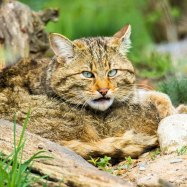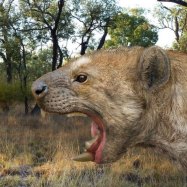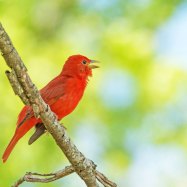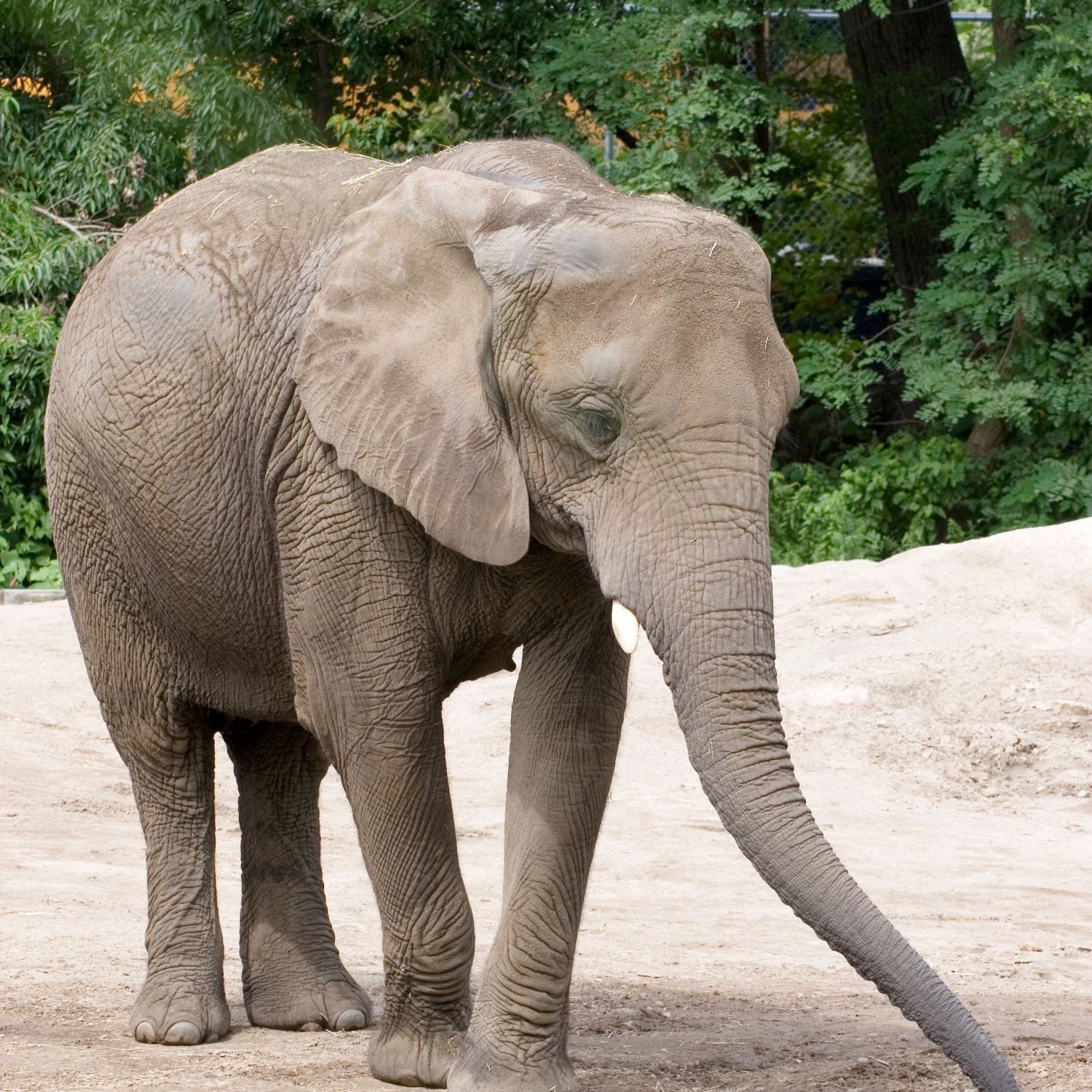
African Bush Elephant
6 to 7.5 meters (19.7 to 24.6 feet)
The African Bush Elephant, found in countries like Botswana, Kenya, South Africa, Tanzania, and Zimbabwe, is a magnificent creature with a body length of 6 to 7.5 meters. Belonging to the Elephantidae family, these animals have a large and robust body shape. Their presence in the African savannah makes them an important part of the ecosystem, playing a key role in maintaining balance and diversity.
Animal Details Summary:
Common Name: African Bush Elephant
Kingdom: Animalia
Habitat: Grasslands, savannas, forests, and marshes
The Majestic African Bush Elephant: The King of the Savannah
The African Bush Elephant, known scientifically as Loxodonta africana, is a magnificent species that roams through the vast landscapes of sub-Saharan Africa. As the largest land animal on Earth, this gentle giant has captured the hearts of wildlife lovers and researchers alike. From its impressive size to its vital role in maintaining the ecosystem, there is no doubt that the African Bush Elephant is a truly remarkable creature.A Kingdom of Its Own
Belonging to the Animalia kingdom and the Chordata phylum, the African Bush Elephant is a mammal that has captured the imagination of humans for centuries African Bush Elephant. Its scientific name, Loxodonta africana, comes from the Greek words "loxos," meaning 'slanting', and "odous," meaning 'tooth,' referring to the animal's distinctive tusks.The African Bush Elephant is part of the order Proboscidea, which includes other elephant species such as Asian elephants and mammoths. With its unique features and behaviors, the African Bush Elephant has earned a special place in the Elephantidae family.
An African Treasure
The African Bush Elephant's habitat includes a wide range of environments, from grasslands and savannas to forests and marshes. Their geographical distribution covers the majority of sub-Saharan Africa, making the continent the natural home of this majestic creature.While the animal's country of origin is often debated, the African Bush Elephant can be found in various countries in sub-Saharan Africa, including Botswana, Kenya, South Africa, Tanzania, and Zimbabwe. These countries provide the perfect ecosystem for the African Bush Elephant to thrive and roam freely.
A Natural Herbivore
The African Bush Elephant has a specialized feeding method, known as herbivory, which means they only consume plants. As the keystone species in their habitats, these gentle giants play a crucial role in maintaining the balance of the ecosystem Anteosaurus. Their diet mainly consists of grasses, leaves, bark, and fruits, with an adult elephant consuming up to 300 pounds of food per day.Not only do they play a vital role in their environment, but the African Bush Elephant is also considered a "gardeners of the savannah," as their grazing and browsing behaviors help shape the landscape. Through their feeding habits, they create pathways for other animals to move through and clear out spaces for new plants to grow.
The Grey Giants
The African Bush Elephant's striking appearance is one of the many things that make them a captivating species. Their body coloration is mainly grey, with some variations in shade depending on the animal's age, gender, and location. The older an elephant is, the more it will fade to a lighter grey or even white.Moreover, their body shape is large and robust, making them the largest land animal on Earth. Male elephants, also known as bulls, can reach heights of 3.3 meters at the shoulder and weigh an impressive 9,000 kg. Female elephants, also known as cows, are slightly smaller, standing at 2.7 meters and weighing around 6,000 kg.
The Mark of an Elephant: Tusks
One of the most recognizable features of the African Bush Elephant is its impressive pair of tusks. These elongated teeth, used for defense, feeding, and digging, can reach lengths of up to 3 meters in males. Female elephants also have tusks, although they are typically smaller and more curved.Unfortunately, the demand for ivory has caused a decrease in the African Bush Elephant's tusk size, as poachers target these magnificent creatures for their valuable tusks. This has led to conservation efforts and strict laws in place to protect these animals and their vital tusks.
The Mighty Herds
African Bush Elephants are highly social animals, living in herds of up to 100 individuals. These herds are led by the oldest and most experienced female, known as the matriarch, who guides the herd in search of food, water, and shelter.The bond between elephants in a herd is strong, and they communicate with each other through a variety of vocalizations and physical touch. They also have a remarkable memory, which allows them to remember their herd members even after long periods of separation.
A Life of Significance
The African Bush Elephant's long and eventful life is filled with significance, as they play an essential role in their habitat and have a rich cultural significance in Africa. In many sub-Saharan African cultures, elephants symbolize strength, wisdom, and good luck. They are often featured in traditional ceremonies, dances, and artwork.In addition to their cultural significance, African Bush Elephants also have a crucial ecological role. As "ecosystem engineers," these gentle giants shape the landscape and create resources for other animals to survive and thrive. They also contribute to seed dispersal and nutrient cycling, making them an integral part of their natural environment.
The Conservation Status of the African Bush Elephant
While the African Bush Elephant is a resilient and long-lived species, they face many threats in their natural habitats. The two main causes of their declining population are habitat destruction and poaching.With human populations expanding and encroaching on traditional elephant habitats, these animals are losing their natural spaces to roam and find food. This not only impacts the elephants but also disrupts the entire ecosystem they are a part of.
Furthermore, the demand for ivory continues to fuel the poaching industry, causing a decline in the African Bush Elephant population. It is estimated that over 50,000 elephants are killed every year for their tusks, making it critical to have strict laws and conservation efforts in place to protect these beloved creatures.
Efforts to Protect the African Bush Elephant
Fortunately, many individuals and organizations are working tirelessly to protect the African Bush Elephant and ensure their survival for future generations. Governments have implemented strict laws and regulations to combat illegal poaching and trade of ivory.Moreover, many conservation organizations and wildlife reserves are dedicated to the protection and preservation of the African Bush Elephant. These efforts involve conservation breeding programs, anti-poaching patrols, and education initiatives to raise awareness about the importance of these animals and their habitats.
A Promise for the Future
Despite the challenges that the African Bush Elephant faces, there is hope for their future. With the continued efforts of conservationists, governments, and individuals, we can protect these magnificent creatures and ensure their survival for generations to come.As we continue to learn more about these gentle giants and their vital role in the ecosystem, it is our responsibility to take effective action to conserve and protect them. By doing so, we not only preserve a remarkable species, but we also safeguard the biodiversity and health of our planet.
The African Bush Elephant: An Animal to be Admired
In conclusion, the African Bush Elephant is a truly remarkable creature that captivates all who have the opportunity to witness it. From its significant role in the ecosystem to its cultural significance and captivating features, the African Bush Elephant is an animal that deserves to be admired and protected. Let us work together to ensure that this majestic species continues to roam the African savannah and thrive in its wild home.

African Bush Elephant
Animal Details African Bush Elephant - Scientific Name: Loxodonta africana
- Category: Animals A
- Scientific Name: Loxodonta africana
- Common Name: African Bush Elephant
- Kingdom: Animalia
- Phylum: Chordata
- Class: Mammalia
- Order: Proboscidea
- Family: Elephantidae
- Habitat: Grasslands, savannas, forests, and marshes
- Feeding Method: Herbivore
- Geographical Distribution: Sub-Saharan Africa
- Country of Origin: Various countries in Sub-Saharan Africa
- Location: African countries like Botswana, Kenya, South Africa, Tanzania, and Zimbabwe
- Animal Coloration: Grey
- Body Shape: Large and robust
- Length: 6 to 7.5 meters (19.7 to 24.6 feet)
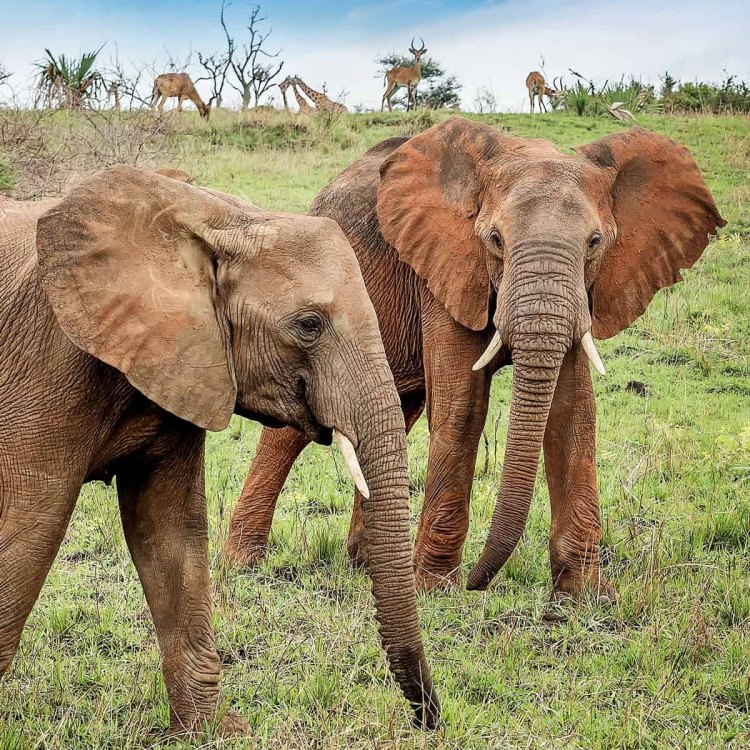
African Bush Elephant
- Adult Size: Average weight: 6,000 to 7,000 kg (13,227 to 15,432 lbs)
- Average Lifespan: Up to 70 years
- Reproduction: Sexual
- Reproductive Behavior: Polygynous
- Sound or Call: Trumpeting, rumbling, roaring
- Migration Pattern: Sedentary with some seasonal movements
- Social Groups: Matriarchal family groups
- Behavior: Social, intelligent, and empathetic
- Threats: Habitat loss and fragmentation, poaching, human-elephant conflict
- Conservation Status: Vulnerable
- Impact on Ecosystem: Key ecosystem engineers, dispersal of seeds, create waterholes
- Human Use: Tourism, ivory trade (illegal), symbolic and cultural significance
- Distinctive Features: Large ears, long trunk, tusks
- Interesting Facts: Largest land animal, highly intelligent, long gestation period
- Predator: Adult elephants have no natural predators
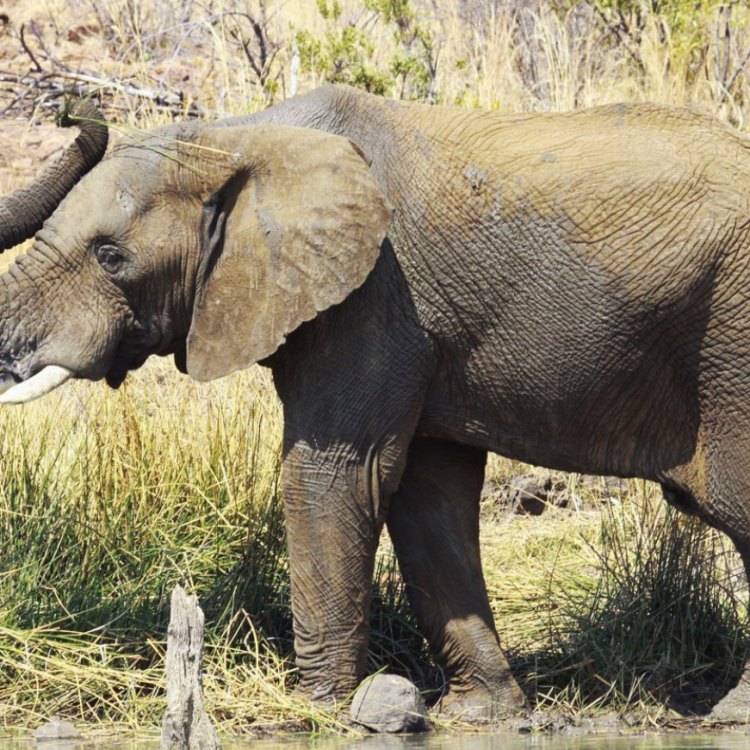
Loxodonta africana
The Astonishing African Bush Elephant: Majestic and Endangered
Deep in the vast savannas and dense forests of Africa, lies an animal of immense power and grace, the African bush elephant. It is a creature that captivates us with its sheer size, social behavior, and distinctive features. However, the future of this majestic animal hangs in the balance as it faces numerous threats to its survival. In this article, we will delve into the unique features and behaviors of the African bush elephant, its role in the ecosystem, and the urgent need for conservation efforts to protect this iconic species PeaceOfAnimals.Com.The African bush elephant, also known as the savanna elephant, is one of two species of elephants found in Africa, with the other being the smaller forest elephant. It is the largest land animal on earth, with an average weight of 6,000 to 7,000 kg (13,227 to 15,432 lbs) and can reach a height of up to 4 meters at the shoulder. They have a distinctive gray-brown skin with no fur, large ears that help regulate their body temperature, and a long muscular trunk for feeding and social interactions.
These gentle giants have an average lifespan of up to 70 years and are highly social animals. They form matriarchal family groups led by the oldest and largest female elephant, called the matriarch. Female elephants stay with their mothers for their entire lives, while male elephants leave the group at the onset of puberty and live solitary lives or form bachelor herds. These family groups are essential to the social structure of elephants, as it provides protection, helps in reproduction, and teaches young elephants survival skills.
Reproduction in African bush elephants is sexual, and they are polygynous, with males mating with multiple females. Their mating behavior is unique, with males competing for dominance through elaborate displays, such as fighting and pushing against each other American Cocker Spaniel. The gestation period for female elephants is approximately 22 months, the longest of any land mammal, and they give birth to a single calf. Elephants have a unique bond with their young, and calves are raised and protected by the entire family group.
These gentle giants are also known for their vocalizations, producing an array of sounds. They communicate with each other using low-frequency rumbles that can travel long distances, trumpeting when they are excited, and roaring when they are angry or threatened. These vocalizations play a crucial role in maintaining social bonds and coordinating movements within large family groups.
Generally, African bush elephants are sedentary, but they can have seasonal movements in search of food and water. They are opportunistic feeders, consuming a vast variety of plant materials, using their strong trunks to rip, pull, and grasp vegetation. Elephants are considered ecosystem engineers, as they play a critical role in shaping their environment. They have a massive appetite, and as they travel, they create trails, remove trees and shrubs, and create open spaces, all of which contribute to maintaining the diversity and health of the ecosystem.
Furthermore, elephants also play a crucial role in seed dispersal, as they consume large amounts of fruits, seeds, and pods, and then disperse them as they travel. This helps with the germination of plants and contributes to the overall health of the ecosystem. Another vital role that elephants play is the creation of waterholes. By digging in dry riverbeds and using their trunks to create depressions, elephants create water sources for themselves and other animals, especially during the dry season.
Despite their critical role in the ecosystem, the African bush elephant is facing countless threats to its survival. Habitat loss and fragmentation, largely due to human activities such as agriculture, mining, and infrastructure development, are top on the list. With a growing human population and demand for resources, elephants are losing their natural habitats, leading to increased human-elephant conflict. This conflict can be deadly for both humans and elephants, as they compete for space and resources.
Poaching is also a significant threat to African bush elephants. Elephants are hunted for their ivory tusks, which are highly prized on the illegal ivory trade market. Despite the international ban on trading ivory in 1989, the demand for ivory still persists, resulting in the illegal killing of elephants for their tusks. Not only does poaching directly affect elephant populations, but it also disrupts family groups and can lead to a decline in the overall social structure of elephants.
Unfortunately, these threats have resulted in African bush elephants being listed as vulnerable on the International Union for Conservation of Nature (IUCN) Red List. It is estimated that their population has declined by around 60% in the last few decades, and if conservation efforts are not implemented urgently, these gentle giants may face extinction.
To save the African bush elephant from extinction, various conservation efforts are being carried out. One of the most important measures is anti-poaching efforts to protect elephants from illegal hunting. This includes enhanced law enforcement, intelligence gathering, and collaborative efforts between governments and international organizations. Moreover, raising awareness and educating local communities on the importance of conserving elephants, and promoting sustainable livelihoods, is crucial in reducing human-elephant conflicts.
Tourism also plays a significant role in elephant conservation as it contributes to the local economy and creates incentives for communities to protect these animals. However, it is crucial to ensure that tourism is responsible and does not negatively impact elephant behavior and their natural habitats.
Furthermore, efforts are also being made to reduce the demand for ivory by raising awareness and supporting alternative income-generating activities for communities involved in the illegal ivory trade. Governments and organizations are also investing in research and monitoring programs to understand the behavior and movement patterns of African bush elephants, which will aid in the implementation of effective conservation strategies.
In addition to conservation efforts aimed towards the survival of the species, it is also vital to recognize and protect the cultural significance of elephants. In many African cultures, elephants hold symbolic and spiritual meaning and are considered a symbol of strength, wisdom, and knowledge. They are featured in traditional dances, ceremonies, and artwork, and hold a special place in the hearts of many communities. This cultural significance can also inspire and motivate communities to participate in elephant conservation efforts.
In conclusion, the African bush elephant is a remarkable creature that holds an integral role in the African savanna ecosystem. Their unique features, social behavior, and crucial role in maintaining diversity and balance in the ecosystem make them an essential species to protect. However, with the increasing threats to their survival, it is imperative that immediate and effective conservation efforts are implemented to ensure their survival for future generations. As we work towards protecting these majestic animals, we must also remember to honor and respect their cultural significance, as it is a fundamental aspect of their existence. Together, we can make a difference and secure a future for the African bush elephant, the gentle giant of the African savanna.
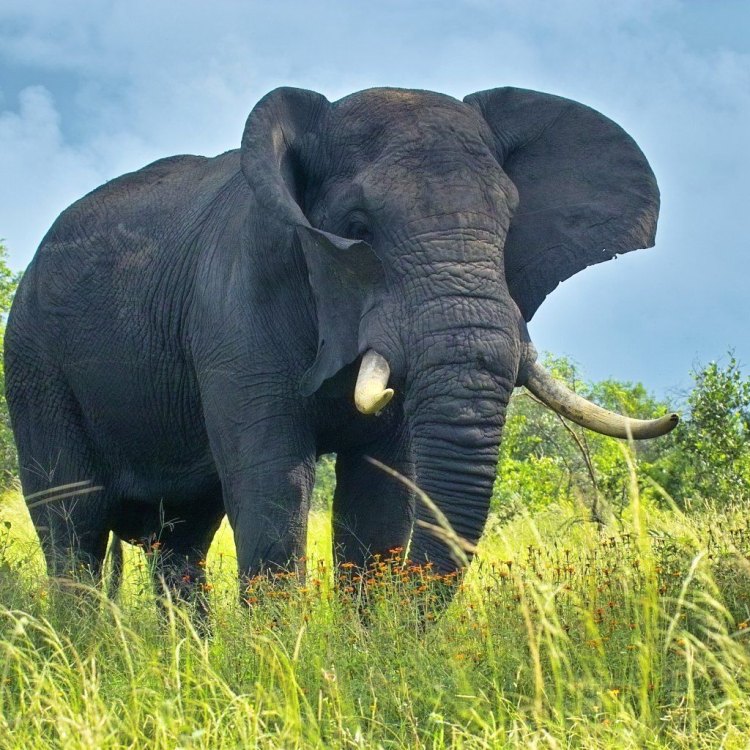
The Majestic African Bush Elephant: The King of the Savannah
Disclaimer: The content provided is for informational purposes only. We cannot guarantee the accuracy of the information on this page 100%. All information provided here may change without prior notice.







